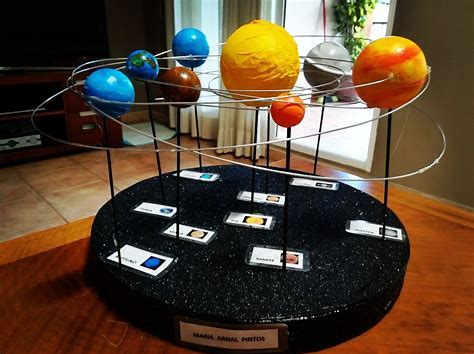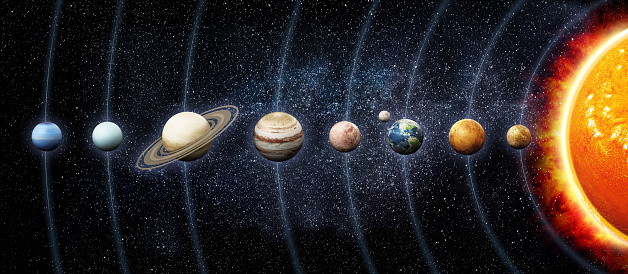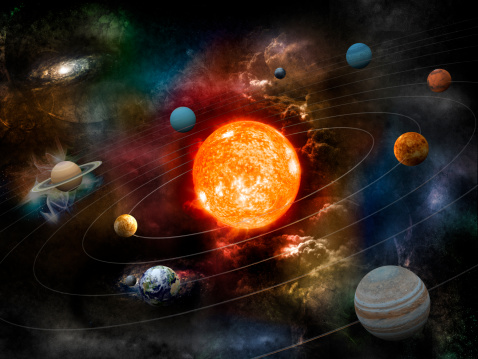
Hey there, fellow space enthusiasts! Are you ready to embark on a journey through the cosmos and build a solar system?
As a seasoned solar system engineer, I’m excited to share some tips and tricks with you that will help bring your vision to life.
Creating a solar system may seem like an impossible task, but fear not! With the right tools and knowledge at your disposal, you can design a breathtaking universe that is uniquely yours.
From choosing the perfect star for your system’s center to selecting just the right planets and moons to orbit around it, each decision you make will have a profound impact on the overall structure and dynamics of your creation.
So grab your telescopes and strap in – let’s get started on building an out-of-this-world solar system!
Picking The Right Star As Your System’s Center
So, you want to build a solar system? Great! But before we dive into the exciting world of planetary design and celestial mechanics, let’s talk about something fundamental: picking the right star as your system’s center.
Now, I know what you’re thinking – ‘Picking a star? Isn’t any old ball of gas in space good enough?’ Well, my dear friend, that couldn’t be further from the truth.
Choosing the correct star is crucial for several reasons. Firstly, it determines how much energy your planets will receive. A hotter star means more radiation, which can potentially strip away atmospheres and make life impossible. On the other hand, a cooler star might not provide enough heat for your habitable zone to exist.
Secondly, different stars have different lifespans and behaviors; some are prone to flares or supernovae that could wipe out entire systems. So if you want your solar system to last for billions of years (and who wouldn’t?), you need to pick a stable and long-lived star.
Selecting Planets And Moons To Orbit Your Star

Now that we have chosen a star to be the center of our solar system, it’s time to think about what planets and moons will orbit around it.
Before selecting celestial bodies, it is important to understand the different types of planets: gas giants, terrestrial planets, and dwarf planets. Gas giants are large planets with thick atmospheres made up mostly of hydrogen and helium, while terrestrial planets are smaller rocky planets like Earth, Venus or Mars. Dwarf planets are similar in size to terrestrial planets but they do not have enough mass to clear their orbits of debris.
Once you’ve decided on the type(s) of planet(s) you want in your solar system, determine how many you want and their order from the sun. Keep in mind that each planet has a unique orbital period and distance from its parent star. These factors play an important role when considering habitable zones for potential life-supporting worlds.
Additionally, consider adding some moons as they can provide additional gravitational forces that help maintain planetary stability over long periods of time.
With these considerations in mind, let’s move onto determining the distances and orbital periods of your celestial bodies.
Determining The Distances And Orbital Periods Of Your Celestial Bodies
Before we can add the finishing touches to our solar system design, we must first determine the distances and orbital periods of each celestial body. This is a crucial step in ensuring that each planet or moon orbits at its proper speed and distance from the sun.
Interestingly enough, there is a formula known as Kepler’s Third Law that allows us to calculate these values with relative ease. By using this law, we can determine the amount of time it takes for a planet to orbit around the sun (its period) based on its distance from the center of our star.
With this information in hand, we’ll be able to create an accurate representation of our very own solar system – one where every planet and moon moves according to their real-life counterparts!
Adding The Finishing Touches To Your Solar System Design

Now that your solar system design is complete, it’s time to add the finishing touches. As a solar system engineer, you want to make sure every detail is perfect before presenting your creation. Here are some tips on how to take your solar system from good to great:
First, consider adding lighting elements to enhance the visual appeal of your model. Adding small LED lights can simulate stars and planets that glow in the dark, creating an immersive experience for viewers. You could also experiment with different colors for each planet or star, making them stand out even more.
Secondly, think about incorporating movement into your design. A motorized base can rotate the planets around the sun realistically, just like our own solar system does! This adds another layer of realism and brings the model to life.
Lastly, be creative with materials – try using 3D printing technology or laser cutting techniques to produce unique parts for your solar system model. With these additions, you’ll create a one-of-a-kind piece that stands out amongst other models.
Incorporating these ideas will help ensure that your solar system design is both visually stunning and technically impressive. Your hard work will pay off when others appreciate all aspects of this beautiful representation of our galaxy!
Conclusion
So there you have it, designing and building a solar system isn’t as daunting as it may seem. By following these steps, anyone can create their own unique solar system.
From selecting the right star to determining distances and orbital periods, every detail is important in creating a functional and aesthetically pleasing celestial world.
For example, imagine a newly discovered exoplanet with its own set of moons that we want to build into a solar system design. We would start by identifying the star it orbits around, followed by choosing which moons will orbit the planet at specific distances and time intervals.
By adding some finishing touches such as asteroid belts or comets passing through the system, our created universe becomes even more realistic.
As a solar system engineer, I encourage everyone to unlock their creativity and explore the vastness of space through designing their very own solar systems. With endless possibilities and discoveries yet to be made beyond our own galaxy, let’s continue to push boundaries and expand our imaginations beyond what we previously thought was possible.

